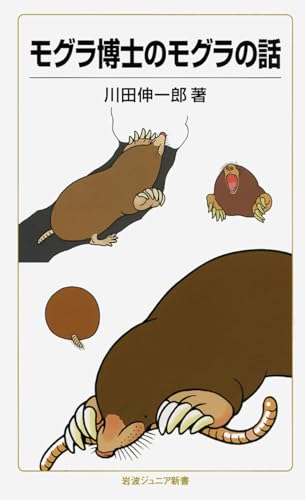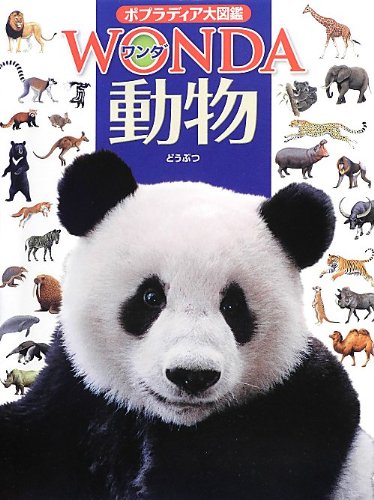8542 0 0 0 皇居におけるタヌキの食性とその季節変動
- 著者
- 酒向 貴子 川田 伸一郎 手塚 牧人 上杉 哲郎 明仁
- 出版者
- 国立科学博物館
- 雑誌
- Bulletin of the National Museum of Nature and Science. Series A, Zoology = 国立科学博物館研究報告. A類, 動物学 (ISSN:18819052)
- 巻号頁・発行日
- vol.34, no.2, pp.63-75, 2008-06
The distribution of latrines of the raccoon dog, Nyctereutes procyonoides, was examined from July 2006 to December 2007 in the Imperial Palace grounds, Tokyo, Japan. The raccoon dog is accustomed to defecate at fixed locations, forming holding latrines; thus the distribution of latrines is a good indicator of their abundance. The results suggest that the latrines are widely scattered in the study site, but are more dense in the Fukiage area, where an old-growth broad-leaved forest is established. The latrine sites are used more frequently from September to December, as the number of fresh feces increased in the autumnal season. To examine the seasonal food changes of the raccoon dogs, 10 pieces of feces from some latrines were collected every month and analyzed the indigestible contents in the sampled feces. The food items identified consisted of animal, plant and man-made materials, suggesting that the raccoon dogs were highly omnivorous. The animal materials found from the feces included mammals (4% of total feces), birds (37%), reptiles (2%), amphibians (3%), insects (95%), chilopods (56%), isopods (2%) and gastropods (12%). Invertebrates were the most abundand food item throughout the year. Three coleopteran families, the Carabidae, Staphylinidae and Scarabaeidae, accounted for a large proportion of the insects and they showed seasonal fluctuations. These suggest that the raccoon dogs fed on them as major animal food resources in the study site, and perhaps the seasonality is related to the temporal changes of availability of the insects. The majority of plant materials found in the feces was a variety of seeds, suggesting that the raccoon dogs fed on berries and fleshy fruits throughout the year. The occurrence of seeds decreased from March to April, which coincided with a low availability of fruits. The seeds found in feces were categorized into three types : (1) the short-term berry type including Prunus (Cerasus) spp., Moms spp., Rubus hirsutus and Machilus thunbergii, which occurred only a short term after their fruiting periods ; (2) the long-term berry type, including Celtis sinensis, Aphananthe aspera and Swida controversa, which occurred continuously for three or more months after the fruiting periods ; (3) the acorn type, including Castanopsis spp., Quercus spp. and Ginkgo biloba, which occurred in early spring (January to April) when the other fruits are scarce. The seasonal change of the three fruit types implies that the raccoon dogs consume the available fruits in relation to the successive fruiting periods. The proportion of artificial materials found in the feces was considerably lower than in previous studies carried out in the suburbs of Tokyo, suggesting that the raccoon dogs in the study site strongly depend on natural foods. Most of the natural food items were native to Japan since the past Edo period. Thus we conclude that the preservation of biodiversity in the Imperial Palace grounds was essential for the re-colonization by the raccoon dogs of the Tokyo metropolitan area after the 1970s.
1092 0 0 0 OA 明治時代のキリンの標本について
- 著者
- 川田 伸一郎 小森日 菜子 郡司 芽久
- 出版者
- 独立行政法人 国立科学博物館
- 雑誌
- 国立科学博物館研究報告A類(動物学) (ISSN:18819052)
- 巻号頁・発行日
- vol.49, no.2, pp.81-95, 2023-05-22 (Released:2023-05-22)
- 参考文献数
- 32
Information on specimens of the giraffe, Giraffa camelopardalis, dating from the Meiji era in Japan, is reviewed based on a literature survey. The first giraffe specimen was a mounted skin imported by Yoshio Tanaka, obtained at the Centennial World Exposition in Philadelphia, USA. This specimen was exhibited at the Imperial Museum in Tokyo until 1910. It was subsequently moved to the Tokyo Women’s Higher Normal School (presently Ochanomizu University), and then lost. We found several photographs and drawings estimated to be of this specimen in popular magazines and digital archives of the museums. The first live giraffes in Japan were a pair provided by German animal dealer, Carl Hagenbeck, to Ueno Zoo in 1907. This female and male pair of giraffes died the following year, and their skins and skeletons were preserved and mounted. Our survey also found several reports about these two individuals after their deaths in several popular magazines, books, and newspapers. This paper presents a summary of the events clarified to date, including these specimens’ condition, and discusses them in the context of the history of Japanese museums.
80 0 0 0 OA 世界哺乳類標準和名目録
- 著者
- 小森 日菜子 小林 さやか 川田 伸一郎
- 出版者
- 独立行政法人 国立科学博物館
- 雑誌
- 国立科学博物館研究報告A類(動物学) (ISSN:18819052)
- 巻号頁・発行日
- vol.50, no.1, pp.33-48, 2024-02-22 (Released:2024-02-22)
- 参考文献数
- 65
A mounted skin of unknown species belonging to genus Canis deposited in the National Museum of Nature and Science, Tokyo (NSMT) is certificated morphologically and bibliographically. The specimen label is described as ‘a kind of Yamainu’ and M831 of the Tokyo Imperial Household Museum collection, while the specimen catalog says that M831 was derived from an individual kept at Ueno Zoo and that it was disposed of after. This specimen seemed to be confused with another one. So, we examined the morphological characteristics of this specimen and traced the history of Canis sp. specimens of the Tokyo Imperial Household Museum collection and Canis sp. kept at Ueno Zoo. As a result, measurements of this mounted skin were reasonable to be within the range of specimens previously identified as Japanese wolves. We confirmed that this specimen is correctly labeled as M831. This specimen M831 was considered to be one of two wolves that arrived at Ueno Zoo from Iwate Prefecture, Japan, in 1888. Therefore, it is thought that this specimen is a Japanese wolf. This study may have revealed a new Japanese wolf skin specimen that had previously been overlooked.
7 0 0 0 OA 哺乳類学がなかった時代の日本のMammalogy
- 著者
- 川田 伸一郎
- 出版者
- 日本哺乳類学会
- 雑誌
- 哺乳類科学 (ISSN:0385437X)
- 巻号頁・発行日
- vol.57, no.1, pp.119-134, 2017 (Released:2017-07-11)
- 参考文献数
- 86
- 被引用文献数
- 4
明治初年,日本の動物学は来日した外国人教師の下で,ようやく近代的な様相を帯び始めたころだった.哺乳類を専門とする研究者はまだおらず,現在の東京大学を中心とする学者たちによって世界の哺乳類に関する知見が紹介され始めた.帝国大学と東京動物学会の成立により,『動物学雑誌』の発行が開始されると,帝国大学動物学教室の飯島 魁や国立科学博物館の前身である教育博物館の波江元吉といった人物が,哺乳類に関する記事を掲載し始め,やがて20世紀を迎えると青木文一郎や阿部余四男といった昭和初期に日本の哺乳類学を形成していく人物が登場し始める.また,この間には欧米から来日した外国人たちにより,日本の哺乳類標本が海外に送られ,その地の研究者によって調査されて日本の哺乳類相に関する研究が活発化した時代でもあった.本稿は,この明治から日本で初めて哺乳類を専門とする学術団体である「日本哺乳動物学会」の1923年設立にかけて活躍した人物とその業績についてまとめ,すでに100年を経て忘れ去られようとしている哺乳類学の黎明期に起こった出来事を記録にとどめるものである.
5 0 0 0 世界哺乳類標準和名目録
3 0 0 0 OA 大正の碩学,永澤六郎と『動物学雑誌』
- 著者
- 川田 伸一郎 下稲葉 さやか 平田 逸俊
- 出版者
- 独立行政法人 国立科学博物館
- 雑誌
- 国立科学博物館研究報告A類(動物学) (ISSN:18819052)
- 巻号頁・発行日
- vol.48, no.2, pp.97-118, 2022-05-20 (Released:2022-05-20)
- 参考文献数
- 62
Rokuro Nagasawa was a student in University of Tokyo under Professor Isao Ijima. He was involved in editing a zoological magazine named “Dobutsugaku Zasshi”, then the official journal of the Zoological Society of Tokyo, but his subsequent life is not well documented. We conducted bibliographic surveys to evaluate Nagasawa’s achievements. He entered the University of Tokyo in 1907 and was in charge of editing “Dobutsugaku Zasshi” from 1911 to 1917. After that, he suddenly disappeared from the Zoological Society of Tokyo and moved to Vancouver, where he worked as an editor-in-chief of Japanese newspapers. He wrote many newspaper articles under the pen name of “Nanbokusei”. Prior to moving to Canada, he also wrote under the pen name of “N.S. Sei”. He returned to Japan before World War II, and worked as a high school teacher in Kyoto. He then moved to Hyogo prefecture and wrote and edited the local history of the area.
3 0 0 0 OA 変わり続ける日本産ニホンモグラ属Mogeraの分類と核型分析の重要性
- 著者
- 川田 伸一郎
- 出版者
- 日本動物分類学会
- 雑誌
- タクサ:日本動物分類学会誌 (ISSN:13422367)
- 巻号頁・発行日
- vol.20, pp.41-50, 2006-02-20 (Released:2018-03-30)
- 参考文献数
- 46
The taxonomy of Japanese moles, genus Mogera, has been confused since the early 1990s, because of the poorly defined type locality of M. wogura and morphological variability within the genus. Genetic research in recent decades has clarified the taxonomic problems of Japanese moles. This paper uses Japanese moles to discuss the importance of karyological study in mammal species recognition. Chromosomal rearrangements are considered likely to have an important role in species diversification of Japanese moles, resulting from postmating isolation mechanisms induced by abnormal meiosis in heterozygotic hybrids. It is well known that recombination leads to gametes with an unbalanced complement of chromosomal segments in inversion or reciprocal translocation heterozygotes. In the case of Japanese moles, four species of Japanese moles, M. etigo, M. imaizumii, M. tokudae and M. wogura, each have a distinct karyotype and/or morphological traits, and are thus considered to be full species endemic to Honshu, Shikoku and Kyushu.
2 0 0 0 台湾およびベトナム産ニホンモグラ属の比較核型分析と分類
- 著者
- 川田 伸一郎 織田 銑一
- 雑誌
- 形の科学会誌 = Bulletin of the Society for Science on Form (ISSN:09156089)
- 巻号頁・発行日
- vol.18, no.1, pp.63-64, 2003-06-01
2 0 0 0 OA 福島原発事故1年目と2年目の小型哺乳類における放射性セシウム濃度の変化
- 著者
- 山田 文雄 友澤 森彦 中下 留美子 島田 卓哉 川田 伸一郎 菊池 文一 小泉 透
- 出版者
- 日本霊長類学会
- 雑誌
- 霊長類研究 Supplement 第29回日本霊長類学会・日本哺乳類学会2013年度合同大会
- 巻号頁・発行日
- pp.90, 2013 (Released:2014-02-14)
福島第一原発事故(2011年 3月)による放射性物質の生態系での動態や野生動物の影響を把握するため,地表や土壌中を生活空間とし短寿命のアカネズミなど小型哺乳類を対象に,1)原発から30kmの福島県川内村の国有林(高線量地,空間線量は平均 3.6 μSv/hr,2011年 10月測定)と,2)70kmの茨城県北茨城市の国有林(低線量地,空間線量 0.2 μSv/hr,2011年 12月測定)で継続調査を行った.放射性セシウム濃度(半減期約2年の Cs-134と約 30年のCs-137)は,1年目のアカネズミは高線量地(平均 4,415Bq/ kg生重,最大 18,034-最小 920Bq/kg, n=26)で低線量地(平均 1,124 Bq/kg,5,007-17Bq/kg,n=40)より 4倍,2年目は高線量地(平均 5,950Bq/ kg,最大 19,498-最小567Bq/kg, n=10)で低線量地(平均 370 Bq/kg,882-11Bq/kg,n=30)より 16倍高かった.ヒメネズミは高線量地(平均 5,360Bq/ kg,最大 26,218-最小 91Bq/kg, n=20)で低線量地(平均 221 Bq/kg,7,078-71Bq/kg,n=32)より約 24倍高かった.ヒミズは高線量地(平均10,664Bq/ kg,最大 29,061-最小 41Bq/kg, n=4)で低線量地(平均 650 Bq/kg,2,600-137Bq/kg,n=4)より 16倍高かった.高線量地のヤチネズミ(平均27,290Bq/kg,54,892-12,094, n=4)は高くアズマモグラ(1,017Bq/kg, n=1)は低かった.年変化(事故1年目と2年目)ではアカネズミは高線量地で変化は少ないが低線量地で70%減少し,アカネズミとヒメネズミの濃度は両地で類似し,アカネズミ,ヒメネズミ,ヤチネズミ及びヒミズが高濃度蓄積を示した.
1 0 0 0 OA コウライムササビ(Petaurista leucogenys hintoni)とコウライキテン(Martes melampus coreensis)の原記載に用いられた標本の再発見
- 著者
- 平田 逸俊 下稲葉 さやか 川田 伸一郎
- 出版者
- 日本哺乳類学会
- 雑誌
- 哺乳類科学 (ISSN:0385437X)
- 巻号頁・発行日
- vol.57, no.1, pp.111-118, 2017 (Released:2017-07-11)
- 参考文献数
- 27
- 被引用文献数
- 2
所在不明とされていたコウライムササビ(Petaurista leucogenys hintoni)とコウライキテン(Martes melampus coreensis)の標本が英国自然史博物館において見つかった.標本の特徴及び付属するラベルを記載論文と比較検討した結果,これらの標本は,記載論文の著者の一人である森 為三が教授をしていた京城第一高等学校に保存されていたコウライムササビの模式標本とコウライキテンの原記載に用いられた参考標本であることが分かった.
- 著者
- 川田 伸一郎 篠原 明男 小林 秀司 原田 正史 織田 銑一 林 良恭
- 出版者
- 日本動物分類学会
- 雑誌
- タクサ : 日本動物分類学会誌 (ISSN:13422367)
- 巻号頁・発行日
- no.17, 2004-08-20
- 著者
- 川田 伸一郎 安田 雅俊 篠原 明男 Lim Boo Liat
- 出版者
- 国立科学博物館
- 雑誌
- 国立科学博物館専報 (ISSN:00824755)
- 巻号頁・発行日
- vol.45, pp.65-74, 2008
- 被引用文献数
- 1
半島マレーシア産のモグラはEuroscaptor属の遠隔地個体群として1940年に記載された.原記載以来,本地域個体群はヒマラヤやタイ国に生息する種の亜種とされるのが一般的で,独立種としての扱いはなされていない.近年発表された形態,核型,分子系統の成果は,半島マレーシア産のモグラが明らかにEuroscaptor属の他種とは異なることを示唆している.本研究では,半島マレーシア産のモグラに関する詳細な形態的記載を行った.半島マレーシアにおいてモグラの主な生息地とされる茶畑の由来に関しても考察を加え,本地域個体群がEuroscaptor属の他種とは明確に異なる形態的特徴を持つ,固有種として位置づけられることを示した.
1 0 0 0 OA モグラをめぐる冒険―岸田久吉の哺乳類学補遺
- 著者
- 安田 雅俊 川田 伸一郎
- 出版者
- 日本哺乳類学会
- 雑誌
- 哺乳類科学 (ISSN:0385437X)
- 巻号頁・発行日
- vol.58, no.1, pp.175-182, 2018 (Released:2018-07-31)
- 参考文献数
- 48
- 被引用文献数
- 2
本稿は下稲葉・安田(2018)で詳しく述べられた日本の研究者による独自の哺乳類学における先駆者の一人,岸田久吉に関する情報を補完するものである.彼は1930年代に台湾の生物地理を理解する上でモグラの重要性に注目した.その成果として,彼は台湾にタイワンモグラMogera insularisおよび1ないし2種の独立種の存在を認め,さらにこれらを独立属として位置づけたが,これらの学名に関する記載をしなかった.これらは裸名(nomen nudum)となるが,近年の研究では台湾に複数種のモグラ(2007年に記載されたヤマジモグラMogera kanoanaおよびその遺伝的変異集団)が分布することが示唆されている.つまり岸田の台湾産モグラ類に関する予言は,あながち間違っていなかったと考えられる.
1 0 0 0 絶滅危機生物の世界地図
- 著者
- Richard Mackay [著] 武田正倫 川田伸一郎訳
- 出版者
- 丸善
- 巻号頁・発行日
- 2005





